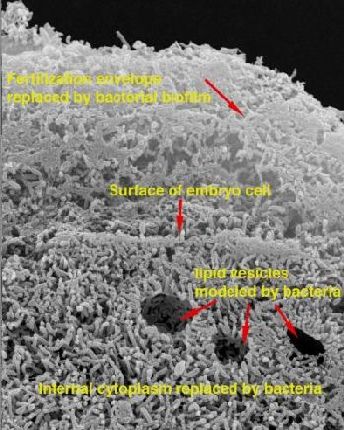Streptococci grow as small gray colonies on sheep blood agar, where they can show alpha-or beta-hemolysis, or they may be non-hemolytic. Unlike staphylococci, streptococci show a higher rate of growth in anaerobic conditions than aerobic and catalase negative (enterococci are catalase negative or weakly positive). Streptococci share many characteristics with the enterococci, including catalase reaction, but trained microbiologist usually has a small problem of differences between the phenotypic characteristics of the two genera. Small, strong alpha-hemolytic colonies, especially lung and oropharyngeal sample, or from blood or cerebrospinal fluid, otherwise find a oral contamination: review
S. pneumonia or viridens streptococci (S. pneumonia
often be subjected to some degree autolysis, creating the typical "donut colonies"). Medium gray colonies with strong or weak alpha hemolysis: consider the features of Enterococcus. The average gray, no hemolytic colonies, most often found in mixed cultures of respiratory or in small quantities in urine culture to consider features of non-hemolytic streptococcus. Small gray beta-hemolytic colonies of small and medium-zone beta-hemolysis: consider the features of the group S. pyogenes. Medium gray colonies with a very small area of weak beta-hemolysis may be limited hemolysis occurs only in the colony, the colony gradually thins at the periphery of "beta vague" colonies, especially the female urogenital site, newborn blood culture, and sometimes with wounds cultures: consider the features of group B
S. agalactiae
or L. monotsytohenes. Small and medium-gray colonies with a large area of strong beta-hemolysis, especially with throat culture to consider the characteristics of beta-hemolytic streptococcus group A, no, rather than group B. Gray alpha-hemolytic colonies may be suspected of S.pneumoniae, streptococci viridens or
Enterococcus sp. Of these three taxa, only enterococci will give a positive test PYR (red color produced after in N, N reagent methyl aminocynnamaldehyde after exposure to L-pyrrolidonyl-beta-naphthylamide (PYR) substrate), as S. pneumonia
<< and >> viridens streptococci PYR-negative. The fastest test to distinguish between
S. pneumonia and viridens streptococci are bile solubility, which no drops 40% sodium dezoksyholatom (bile salt) fell to a well-isolated colonies of alpha-hemolytic organism. After 15 minutes record review. Autolytic system
S. pneumonia activates bile salts and the colony will be dissolved, while viridens streptococci bile insoluble and remain intact colonies on the plate. Alpha-hemolytic colony morphology resembles Enterococcus over it like streptococci and pneumococci viridens, but that PYR negative can be a group D Streptococcus. Alpha-hemolytic streptococcus group D, sometimes occurs as a significant pathogenic urine cultures, although they can also (rarely) cause endocarditis and / or sepsis. As enterococci, group D streptococci can grow in the presence of 40% bile and hydrolysis esculine esculine, while other streptococci is not and may be determined by these tests. Viridens streptococci are usually low virulence, although they are about 50% of cases of subacute bacterial endocarditis, especially in immunocompromised patients after transient bacteremia event, such as orthodontic manipulation. Some microbiologists consider non-hemolytic streptococcus to be part of a group viridens although "viridens" refers to the greening of blood agar. Non-hemolytic streptococcus is usually found as contaminants or pathogenic as part of a mixed culture, including transient bacteremia after events such as orthodontic manipulation. Finding obviously not induce hemolytic streptococcus has microbiologist to exclude enterococci (which PYR positive), streptococci group D (which grow in the presence of 40% bile and hydrolyze to esculine), weakly-hemolytic group B
S. agalactiae
(consider the morphology of the colonies, such as type, number of organism present, and possibly special tests such as latex agglutination test for group B
S. agalactiae
) and << L . monotsytohenes >>
(morphology of the colonies almost identical group B S. agalactiae, but catalase-positive gram-positive rod). To some extent, the approach to the determination of beta-hemolytic streptococcus, depends on the type of sample. Group S. pyogenes
is the most important streptococcal human pathogen. It produces small and medium-gray colonies with a small zone of beta hemolysis and often recovered from a throat culture, where it produces pharyngitis and tonsillitis most commonly in children aged 5-15 years. Asymptomatic carriers in the upper airways and the skin is often responsible for spreading infection. It is important to diagnose and treat "strep throat" not so much because of pharyngitis as such, but because of the possible consequences, including rheumatic fever and acute glomerulonephritis. Although other streptococci may be associated with pharyngitis are not affiliated with these consequences, and treatment with antibiotics, therefore, not included in the absence of a positive result group
pyogenes, S., as the potential for antimicrobial resistance outweighs any therapeutic effect. Group S. pyogenes
recovered from any other sites such as wounds, fluid or blood cultures should be considered a serious threat, as pathogenic organisms can be very dangerous and rapidly fatal. (Sometimes the group
S. pyogenes
located in a small amount of urine cultures, especially in the presence of mixed flora, whenever possible, present as normal flora, although the mention strattera dosage of its presence even in small quantities can be displayed ).
Group B S. agalactiae
produces gray colonies of small to very small area of weak beta-hemolysis, which sometimes can be observed is only just below the colony after colony were physically removed from the blood agar plates. The colony gradually becomes thinner at the periphery of the typical "vague beta" colonial morphology. This organism is restored especially female urogenital sites (including, not uncommon, urine cultures), from neonatal blood cultures, and sometimes from a wound culture. About a third of women are asymptomatic vaginal carriers of group B
S. agalactiae, but the body can lead to severe neonatal infections, including pneumonia, meningitis and sepsis of newborns. Wound infection with group B
S. agalactiae
sometimes there, sometimes in patients with diabetes. Based on the morphology of the colonies only group B
S. agalactiae
be confused with catalase-positive, Gram-positive rods. Non-group, not group B beta-hemolytic steptococci of small and medium-gray colonies with large areas of strong beta-hemolysis and restored especially with oropharyngeal cultures where they are rarely confused with
pyogenes S.. They have minimal virulence. .



